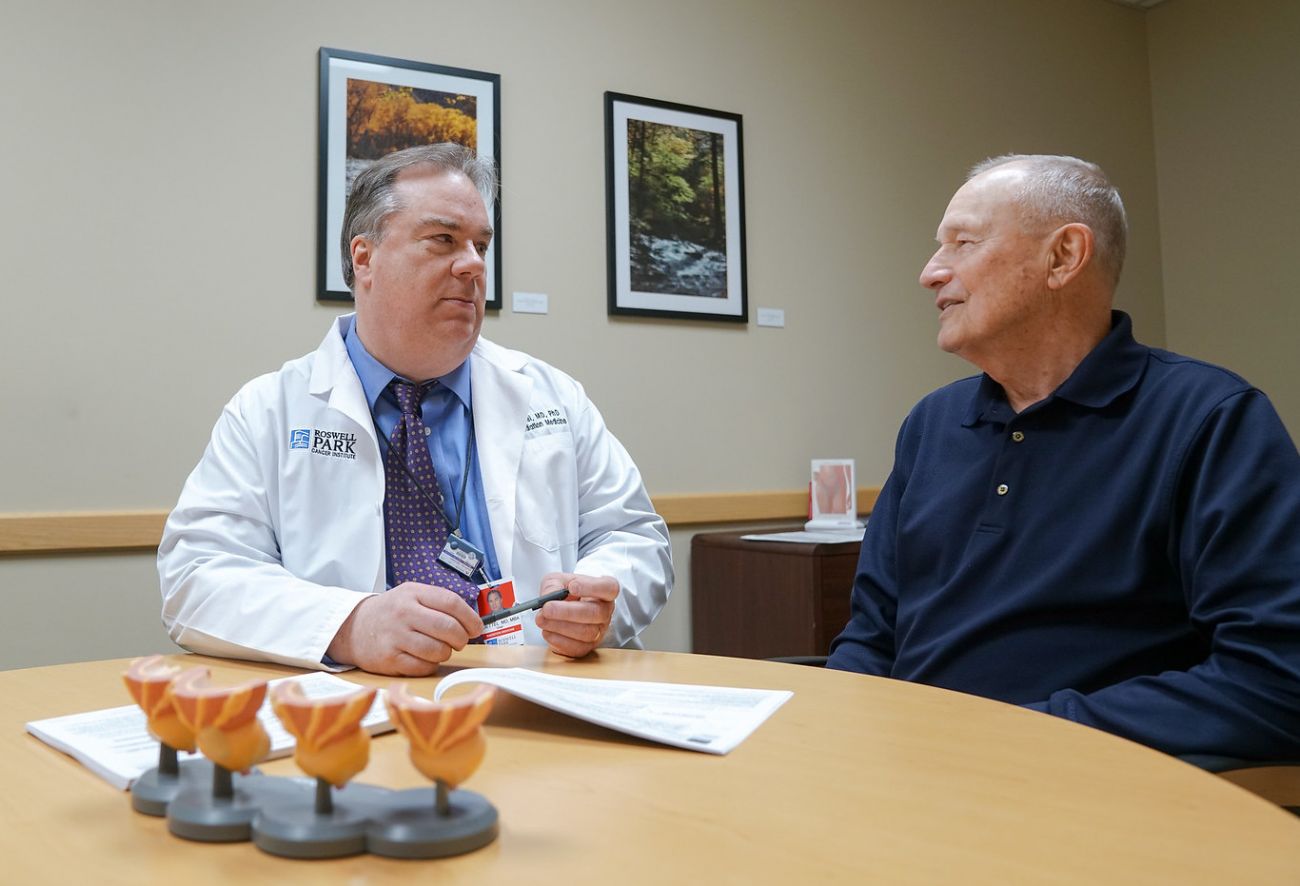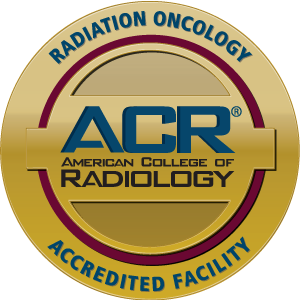Radiation is sometimes used to treat prostate cancer that has not moved outside the prostate gland or that has spread only to nearby tissue. If the disease is more advanced, radiation may be used to reduce the size of the tumor or to provide pain relief when cancer has spread to the bones. At Roswell Park, radiation oncologists, medical physicists and dosimetrists work together as a team to develop the best treatment plan for each patient. Determining whether radiation therapy is right for you — and which type — will depend on your individual circumstances and not all treatments are appropriate for every patient. Radiation therapy for prostate cancer may include one of the following approaches:
External beam radiation
In this procedure, a machine focuses radiation beams on the area affected by the cancer. There are several types of external beam radiation. These include:
Image-Guided Radiation Therapy (IGRT):
Roswell Park is equipped with Image-Guided Radiation Therapy (IGRT) Systems, computer-assisted devices that are precise enough to pinpoint an area as small as one millimeter — about the width of a coarse grain of sand. The equipment uses imaging scans (CT, MRI or PET) taken during treatment to identify changes in the tumor’s size or location while treatment is underway. The patient can be repositioned or the radiation dose can be recalculated as needed during treatment to improve accuracy.
Intensity-Modulated Radiation Therapy (IMRT):
IMRT allows different parts of the tumor and surrounding tissue to receive different doses of radiation. This reduces radiation damage to healthy tissues near the prostate and improves treatment effectiveness by increasing the dose of radiation delivered to the cancer.
Brachytherapy for prostate cancer
Brachytherapy is internal radiation treatment in which radioactive material is placed directly into the tumor or close to it. For prostate cancer, there are two types:
- Low-dose-rate (LDR) brachytherapy (also called interstitial implant) delivers low-dose radiation to tumor areas by placing radioactive “seeds” — each about the size of a grain of rice — into the prostate gland and leaving them there permanently. The radiation given off by the radioactive seeds kills the tumor cells. They will lose their radioactivity after about 10 months. This procedure can be combined with external-beam radiation to increase the radiation dose while sparing normal tissues from damage and to avoid the need for hormone therapy.
- High-dose-rate (HDR) brachytherapy allows high doses of radiation to be delivered to tumors. It uses one very small, high-intensity radiation source that is inserted into the affected area temporarily. This type of brachytherapy leaves no permanent radiation in the patient: the radioactive implants stay inside the body anywhere from minutes to hours. Treatments are given in separate sessions, approximately six hours apart.
Radiation medicine: It matters where you go for your treatment
If radiation therapy is part of your prostate cancer treatment plan, choosing where to receive your treatments is one of the most important decisions you’ll make. Consider these key points before beginning any treatment:
National Cancer Institute (NCI)-designated cancer centers are recognized for their scientific excellence and quality patient care. They are a major source of breakthroughs and the development of more effective ways of preventing, diagnosing and treating cancer and delivering those medical advances to patients. Roswell Park is a comprehensive cancer center, which means we are leaders in cancer research.
Many cancer patients need radiation therapy in addition to chemotherapy, biologic therapy and surgery. Some patients also receive intraoperative radiotherapy (IORT) — radiotherapy given during surgery. The type of radiotherapy you receive, and when you receive it, must be coordinated with the other treatments in your plan. Having all these specialists on your medical team — surgeons, medical oncologists and radiation oncologists, plus immunologists, psychologists, nutritionists and social workers — working under one roof, and collaborating on a regular basis to evaluate your treatment and day-to-day needs, provides the highest level of comprehensive care.
Roswell Park's Department of Radiation Medicine is the regional leader in providing the latest treatment methods. Each physician on the Radiation Oncology team specializes in a particular type of cancer. The team includes board-certified radiation oncologists, medical physicists and dosimetrists. They work closely with our physician assistants, registered nurses, radiation therapists and other support staff to develop a treatment plan specifically for you that is based on the most up-to-date, peer-reviewed research.
You need and deserve to be treated by a team whose full-time job is your care. Radiation therapy requires accurate and careful planning, timing, dosing and marking the treatment area with great precision. Some treatment centers have multiple locations manned by just one physician and staffed by part-time or as-needed personnel who do not have extensive experience in radiation medicine.

